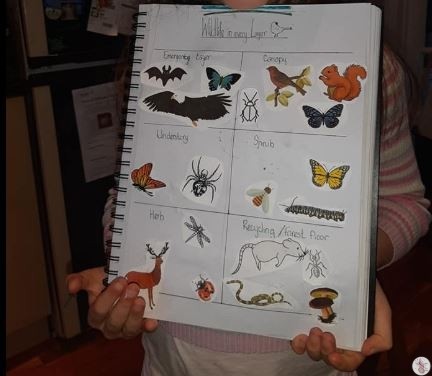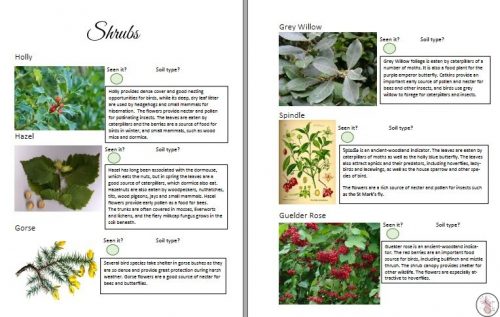The John Muir Trust Award is a nature-based award that encourages people to connect with, enjoy, and care for wild places. It’s an environmental award scheme for people of all backgrounds that can be achieved without the participants even knowing they’re actually working on an award, as it is non-competitive, inclusive and accessible.
We’ve been really fortunate over the last year to have forest school sessions with Woodlearn Forest School here on the Isle of Wight and as part of our sessions we’ve over the last 10 weeks been working towards the Discover level of the award – that’s the introductory level.
The bonus is that the discover level is very basic, and you can more or less adapt it to your group or setting. More details here.
![]()
Discover Award – John Muir Trust
The four areas that the discover award requires are:

- Discover a wild place – for this you have to identify the wild place, and learn something about it. We looked at layers of the forest, who lives in the different layers of the forest, and I created a ‘spotters guide’ to the flora and fauna of our chosen wild place, Parkhurst Forest, which also included a bit of the history of Parkhurst Forest. (You’re welcome to use these resources – there’s no requirement to make them yourself, I just like making resources! The Parkhurst Guide will work for most British forests.)
- Explore the wild place – You can visit the space at different times of day and night, in different seasons. Identify the landscape, habitats and biodiversity within that space. The idea here is to help participants develop a sense of familiarity and ownership with the wild place. We learned about our most famous inhabitants the red squirrel – you can download the red squirrel quiz, or learn about small mammals and the footprints they leave and food they eat.
- Conserve your wild place – With the ‘ownership’, find a way to care for your wild place, take some personal responsibility, make a difference, put something back. Take practical action whether that’s litter picking or participating in a wildlife audit, tree or shrub planting, etc. Also learn about John Muir’s life and the value of his work in conservation. We made a timeline of John Muir’s life by writing down the key things from his life, finding images in magazines to go with the key points and then adding them to a timeline.

- Share it – Tell others about what you’ve done – experiences, achievements, feelings, what’s been learned. Reflect, review and discuss your adventures and experiences in wild places. The girls created this video of their John Muir Trust Award Discover Level experience.
It might sound complicated, but actually it’s pretty simple. Because I like evidencing things in a way that also compliments curriculum goals we’ve kept a written record of the things we’ve done over the last ten weeks.
We have used our local ‘wild place’ Parkhurst forest for this level of the award. The printouts below are specific to things I know we find in our forest. You can use them for general studies about forest habitats, biodiversity in the South of England and many of the year 3 science curriculum requirements, but they are NOT conclusive (i.e. the mammals sheet has six mammals on it, not a conclusive list of all mammals found in forests.)
Oh, and because I’m annoying that way – there’s also a John Muir Trust Award lapbook you can use to keep you on target.
The History and biodiversity of Parkhurst forest (most of what’s in this book, aside from perhaps the red squirrels, you’ll find in most UK forests)
Who Lives in the Forest Layers
Small Mammals Footprints and Food

